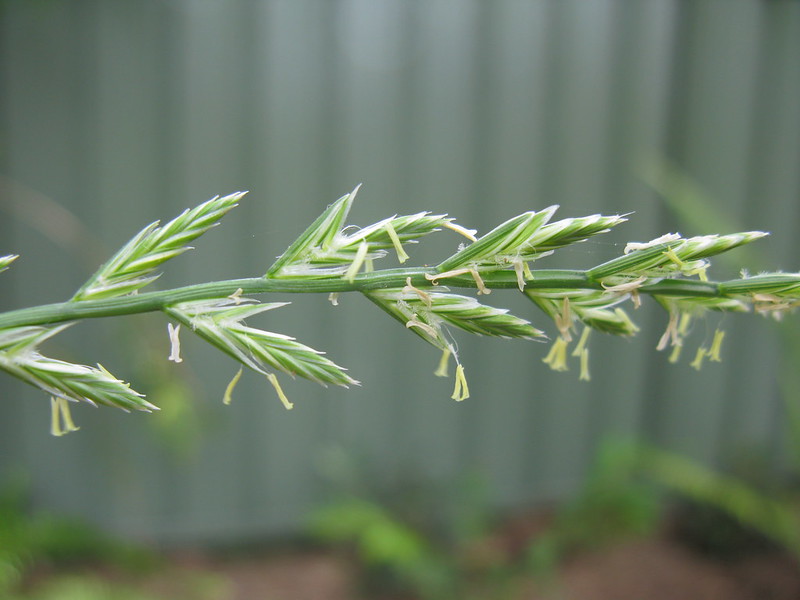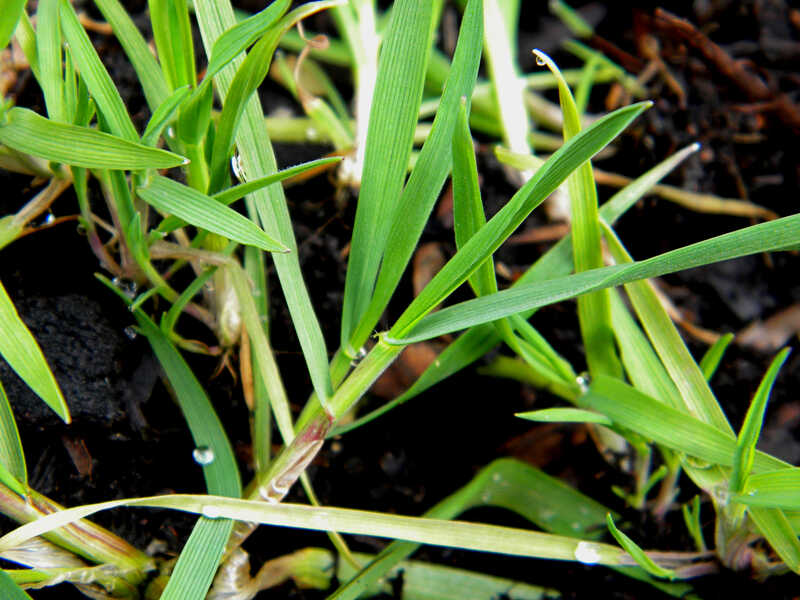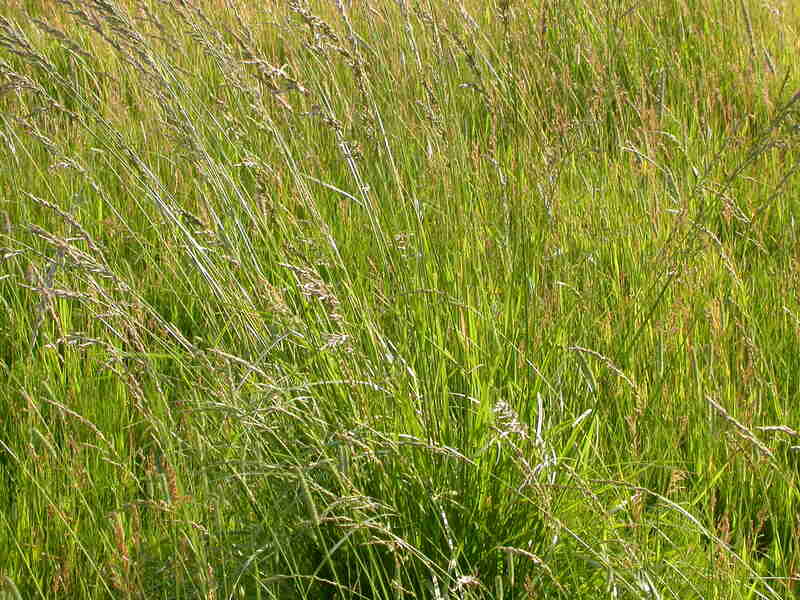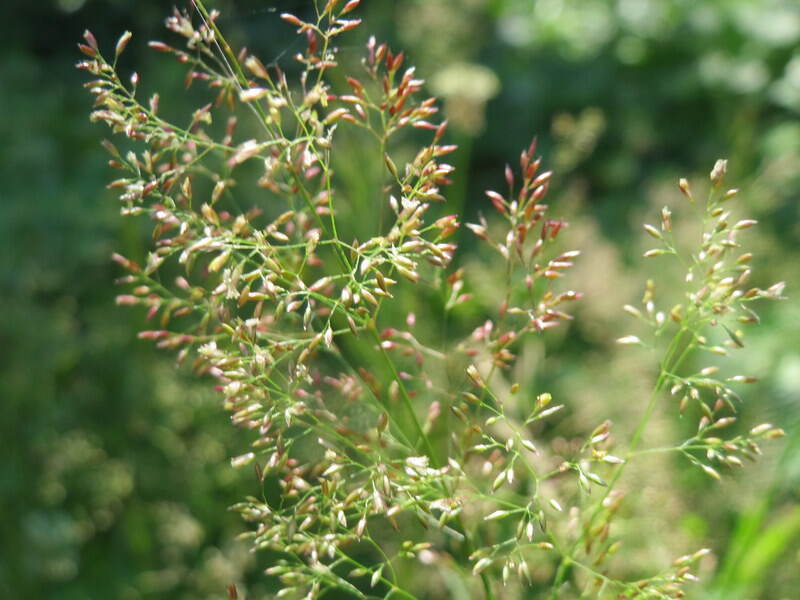5 Best Grass Types for Washington
BY LASHONDA TUCKER | APRIL 29TH, 2023 | LAWN CARE, WASHINGTONAfter enjoying the rainforests at Olympic National Park or the stunning waterfall at Snoqualmie Falls, you may want to return home to a landscape just as beautiful and inviting. That’s why we’ve gathered the best grass types for Washington that thrive in the state’s cool weather and rainy conditions.
It doesn’t matter if you live in the rainier, milder climate of western Washington or the drier, colder temperatures of eastern Washington, you’ll find grass with properties that work best for your home and lifestyle.
In this article:
- Best Grass Types for Western Washington
- Best Grass Types for Eastern Washington
- FAQ About Washington Grass Types
- Choosing Plant and Grass Varieties for Your Washington Landscape
Warm-Season vs. Cool-Season Grasses
When choosing a grass type for your lawn, your options include warm-season grasses and cool-season grasses. Washington has a diverse climate and is broken down into several major regions. Even with the differences in weather, cool-season grasses thrive best in all areas of the state.
Warm-season grasses thrive in hot, humid climates. They go dormant during the cold winter months, from late autumn through early spring, as temperatures cool. The grass turns brown when the temperatures drop below freezing.
Warm-season grass thrives best in areas with hot summers and short, mild winters, so most grasses in the southern regions of the country are warm-season grasses.
While warm-season grass is green in the summer, cool-season grass is brown and dormant during this time of year. Like warm season-grasses, freezing temperatures send cool-season grasses into dormancy. But cool-season grasses go dormant later in the season than warm-season grasses.
Cool-season grass thrives when air temperatures are between 60 and 75 degrees Fahrenheit. Another characteristic of cool-season grasses is that they are well-adapted to areas that experience wide variations in temperatures. Because they grow best in cool to mild weather, most grasses in the northern regions of the United States are cool-season grasses.
4 Cool-Season Grasses for Washington
The climates in western Washington and eastern Washington are different. Because different climates, soil types, and other factors affect grass health and growth, we identify which grass types are best for each major region:
1. Kentucky Bluegrass
The most prevalently used grass in the United States is Kentucky bluegrass. It is well adapted to eastern Washington’s soil and extreme temperature fluctuations. However, it’s not well-suited for the soil and mild, cool, and moist climate of western Washington.
Kentucky bluegrass requires a lot of maintenance, like frequent mowing, watering, and fertilization, but the hard work may be worth the benefits. Bluegrass quickly fills in bald patches after a lawn is established. So, if you have bare spots, you may want to consider bluegrass. This grass type also helps prevent erosion.
It has a dark green color and establishes into a lush, dense lawn. Kentucky bluegrass prefers properties that get a lot of sun. If trees or buildings block out the light on your property, fine fescue or tall fescue have more shade tolerance and are better options.
Kentucky bluegrass is soft, has moderate foot-traffic tolerance, and recovers quickly from damage. These characteristics have made it a common choice for sports fields in adapted areas. Therefore, Kentucky bluegrass is right at home on properties with homeowners who love to have lawn parties or host play dates full of children playing hide-n-seek across the lawn a few times a month.
Classification: Cool-season grass
Spreads by: Rhizomes
Shade tolerance: Low
Drought tolerance: Moderate
Foot traffic tolerance: Moderate
Maintenance needs: Moderate mowing and high fertilization needs
Mowing height: Set mowing height to 2.5 to 3.5 inches
Potential for disease: Moderate to high; prone to several diseases, such as dollar spot, leaf
Soil pH: 6 – 7.5
Soil type: Performs best in well-drained, heavy soils with high fertility.
Other notes: Used in most pastures in the northeastern part of the country because it tolerates heavy grazing. Varieties developed for lawn use need more watering, dethatching, and fertilization than varieties used for animal feeding.
2. Turftype Perennial Ryegrass

Photo Credit: Harry Rose / Flickr / CC BY 2.0
Perennial ryegrass is an excellent choice for Washington because it thrives in both eastern and western Washington. If you live in the dividing zone of the Cascade range, you’ll have the comfort of knowing this grass is well-suited for both sides of the line.
Perennial ryegrass mixes well with other grass types like bentgrass, fine fescues, and Kentucky bluegrass. Although Kentucky bluegrass is a good choice for quickly filling in bare spots, ryegrass may be a better option for bald spots or if you need to overseed or start a new lawn. Ryegrass germinates and establishes more quickly than some other grass types, including Kentucky bluegrass.
Ryegrass’s blades are a glossy sheen on one side, and the stem base is reddish-purplish. Perennial has the least shade and drought tolerance of all the grasses on this list. With all of the rain the Cascade range and western Washington receive, a home in these regions will be a good place for this grass variety.
Perennial ryegrass is ideal for those who like to entertain outdoors. It has more wear resistance than other grasses adapted to the Pacific Northwest area. Its fine texture provides a soft landing for falls. If your lawn is host to hide-n-seek games a few days a week, you’ll love perennial ryegrass.
Classification: Cool-season grass
Spreads by: Has a bunch-type growth habit
Shade tolerance: Low
Drought tolerance: Low
Foot traffic tolerance: High
Maintenance needs: Moderate mowing and fertilization requirements. Thatch is not significant.
Mowing height: Set mowing height to 1.5 to 2.5 inches
Potential for disease: High. Common diseases include gray leaf spot, red thread, and leaf spot/melting-out.
Soil pH: Can grow in soils with a pH between 5 and 8, but prefers between 6 and 7.
Soil type: Prefers good drainage and fertility, but can tolerate some poor drainage.
Other notes: Helps with weed suppression. Lawns are made more traffic-resistant and disease-resistant when perennial ryegrass is mixed with Kentucky bluegrass.
3. Fine Fescue

Photo Credit: Bildoj / Wikimedia Commons / CC BY-SA 3.0
Fine fescue is another grass type that homeowners gravitate towards because it grows early and mixes well with other types of grass, like Kentucky bluegrass, bentgrass, and turf-type perennial ryegrass.
Homeowners overseeding an existing lawn or filling in blank patches may choose fine fescue over perennial ryegrass or Kentucky bluegrass because fine fescue is the most shade-tolerant of all the cool-season grasses. It’s a better option if your home is significantly shady and plants don’t get much direct sunlight. The chewings variety is the most shade-tolerant fine fescue species.
Fine fescue has a blue-green tint. Its fine texture provides a soft cushion for bare feet, but its traffic tolerance is low to moderate. It won’t tolerate routine kickball games or lawn parties.
Fine fescue has low fertilizer, mowing, and watering requirements, so it’s possible to have an immaculate lawn without a lot of work. Its moderate to high-drought tolerance makes it a good selection for the drier Rocky Mountain Region, Plateau Region, and Eastern Cascade Range.
Fine fescue thrives across the entire Washington area.
Classification: Cool-season grass
Spreads by: Creeping red fescue spreads by rhizomes, while other fine fescues are bunch-type grasses, such as chewing, hard, and sheep fescues.
Shade tolerance: Moderate to High, depending on species
Drought tolerance: Moderate to High, depending on species
Foot traffic tolerance: Low to Moderate, depending on species
Maintenance needs: Low fertilizer and mowing needs.
Mowing height: Set mowing height between 2.5 and 4.0 inches, depending on species.
Potential for disease: Moderate. Common diseases include red thread, leaf spot, dollar spot, summer patch, and powdery mildew.
Soil pH: 6-6.5
Soil type: Will not perform well in wet soil conditions. Prefers drier soils and tolerates a wide range of soil types and fertility.
Other notes: Sheep fescue, hard fescue, creeping red fescue, slender creeping red fescue, and chewings fescue are the most commonly used varieties.
4. Tall Fescue

Photo Credit: Matt Lavin / Flickr / CC BY-SA 2.0
Tall fescue has wide leaves and a dark green, glossy color. It’s well-adapted to cold, heat, and shade. To prevent damage and stress during long dry spells, homeowners need to mow and water tall fescue often.
However, it won’t need as much irrigation as some other grasses in non-drought conditions, like perennial ryegrass. This is because tall fescue has moderate to high-drought tolerance, making it ideal for the drier eastern Washington area.
Tall fescue grows well in both eastern and western Washington.
Classification: Cool-season grass
Spreads by: Produces short rhizomes but has a bunch-type growth habit
Shade tolerance: Moderate
Drought tolerance: Moderate to High
Foot traffic tolerance: Moderate
Maintenance needs: Frequent mowing. Does not produce significant thatch.
Mowing height: Set mowing height to 2 inches when the grass reaches 3 inches tall.
Potential for disease: Tolerant of most diseases when properly maintained.
Soil pH: 5.5-6.5
Soil type: Adapted to a wide range of soil conditions, but prefers fertile clay soils with good drainage.
Other notes: Some varieties remain green year-round, like Falcon, Olympic, and Houndog.
5. Colonial Bentgrass

Photo Credit: Andreas Rockstein / Flickr / CC BY-SA 2.0
Colonial bentgrass has a light green color and dense covering. It grows best when it gets sunlight in the morning and shade in the afternoon and when nights are cool.
Colonial bentgrass has moderate to high maintenance needs. In addition to requiring mowing at least once weekly, bentgrass also needs to be dethatched, watered, and fertilized often. Although it’s adapted to both the east and west sides of Washington, its high watering needs make it ideal for the heavier rainfall in western Washington and the Cascade region.
Colonial bentgrass has a soft texture and average foot-traffic tolerance. It’s not the best choice for regular get-togethers on the lawn.
Classification: Cool-season grass
Spreads by: Short rhizomes that may bring about short stolons
Shade tolerance: Moderate
Drought tolerance: Low
Traffic tolerance: Low
Maintenance needs: Moderate to high. Best when mowed short, at least once weekly.
Recommended mowing height: Set the mowing height between 0.5 and 1 inch.
Potential for Disease: Moderate. Susceptible to Fusarium patch in the winter. Vulnerable to Take-all patch when young but severity decreases as turf develops.
Soil pH: 5.5-6.5
Soil type: Tolerates poor soil conditions, but prefers moist and fertile soil.
Other Notes: Highland Colonial Bentgrass is a cultivar that’s slightly more heat and drought-tolerant.
Best Grass Types for Western Washington
The best grass types to grow in Western Washington include:
- Perennial ryegrass
- Fine fescue
- Tall fescue
- Colonial bentgrass
The mild, cool, and moist climate of western Washington, which includes cities like Tacoma and Seattle, is what cool-season grasses crave. Summer temperatures usually remain at 79 degrees Fahrenheit or below. Although winter days typically don’t fall below 45 degrees Fahrenheit, temperatures can drop into the low 20’s. Cool-season grasses have the necessary hardiness to survive these freezing lows.
The Cascades are somewhat ambiguous, as they separate or sit between eastern and western Washington. The Cascade Mountains divide the state into two major provinces: eastern Washington and western Washington.
The northern part of the mountains is in eastern Washington and includes most of the Columbia River Plateau. The western part of the Cascade range has the greatest population and includes cities like Vancouver, Seattle, Bellingham, Olympia, and Tacoma. The mountains get a lot of snow and rain, making it a wet area.
The following regions are located in western Washington:
- Coastal Region
- Puget Sound Lowlands
- Western Cascade Range
Best Grass Types for Eastern Washington
The best grass types to grow in eastern Washington include:
- Kentucky bluegrass
- Perennial ryegrass
- Tall fescue
- Fine fescue
Eastern Washington does not have the wet reputation of western Washington because the Cascades thirstily drink up most of the rain. The eastern side of Washington, which includes cities like Ellensburg, Wenatchee, and the Tri-Cities, has a dry climate and experiences summers and winters with more extreme temperatures. It’s usually between 0 degrees Fahrenheit and the upper 30s in the winter, compared to western winter days that rarely go lower than 45 degrees Fahrenheit.
Summer temperatures average between the high 80s and mid-90s. Although warm-season grasses thrive best in higher temperatures, eastern Washington needs grass types that can withstand its freezing winter days, too. Cool-season grasses grow best in extreme temperatures, so it is best suited for an area like eastern Washington, which battles both extreme heat in the summer and cold in the winter.
- Plateau Region
- Rocky Mountain Region
- Eastern Cascade Range
FAQ About Washington Grass Types
The best types of grass for Seattle are the cool-season grasses discussed in this article, except for Kentucky bluegrass. It’s recommended that Kentucky bluegrass be used only as a mixture with other grasses for the western Washington area.
Seattle homeowners are advised not to use Kentucky bluegrass as monostands, meaning it should not be planted as the only grass type. So, fine fescue, tall fescue, perennial ryegrass, and colonial bentgrass are the best grasses for Seattle.
According to Washington State University, warm-season grasses like Zoysia, St. Augustine, bermudagrass, and centipedegrass are not adapted to Washington’s climate and should not be used.
At the time of that publication, buffalograss was being evaluated for use in the area. A more recent article reported it should not be used in western Washington. It can be used in central Washington, but only in areas that are low to moderately maintained.
Kentucky bluegrass will work for you if you live on the eastern side of the Cascade range. But Kentucky bluegrass is not recommended for western Washington. If you’re not quite sure what side you’re on, or you’re closer to the middle, avoid bluegrass and stick with perennial ryegrass, the fescues, and colonial bentgrass.
Choosing Plant and Grass Varieties for Your Washington Landscape
There’s not much difference between the grasses that thrive in the different regions of Washington, except for Kentucky bluegrass and colonial bentgrass. Nevertheless, if you live in drier regions like the Rocky Mountain Region and Plateau Region, you may want to choose grasses with the highest drought tolerance, like fine fescue or tall fescue.
Fungal lawn disease spreads in the humidity and cool temperatures in the Pacific Northwest area west of the Cascades. If you live in this area, opt for grasses that are immune to diseases these conditions cause. For example, perennial ryegrass has good immunity.
Be sure to choose grass that is well-suited for your yard’s characteristics and your family’s lifestyle.
Looking for a Washington lawn care pro near you? We have trusted lawn care pros in Seattle, Tacoma, Spokane, and many more cities across the state.
Main Image Credit: House Seattle Washington / Wonderlane / Flickr / CC BY 2.0